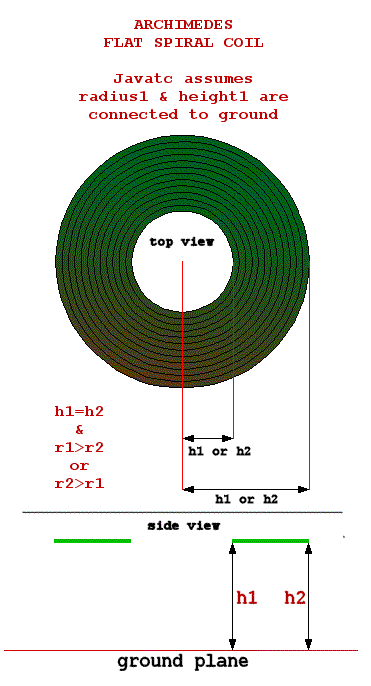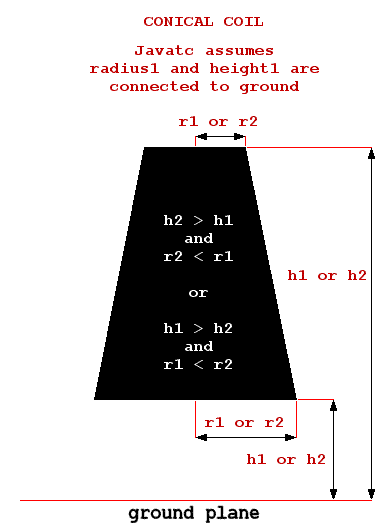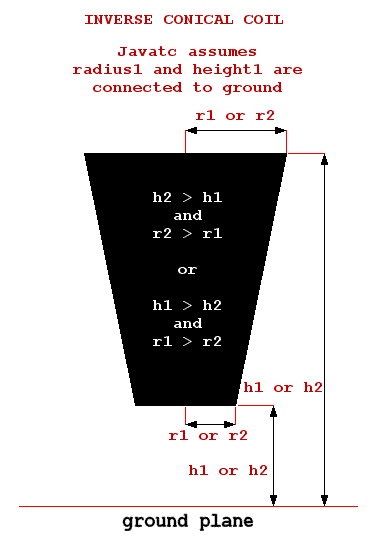For Ribbon Primary conductors, the Ribbon checkbox must be checked.
Height1 and Height2 should reflect the BOTTOM of your ribbon.
The top of the ribbon is defined automatically using the Ribbon Height input.
Inputs required for ribbon conductors are: radius1, height1, radius2, height2, turns, ribbon height, ribbon thickness
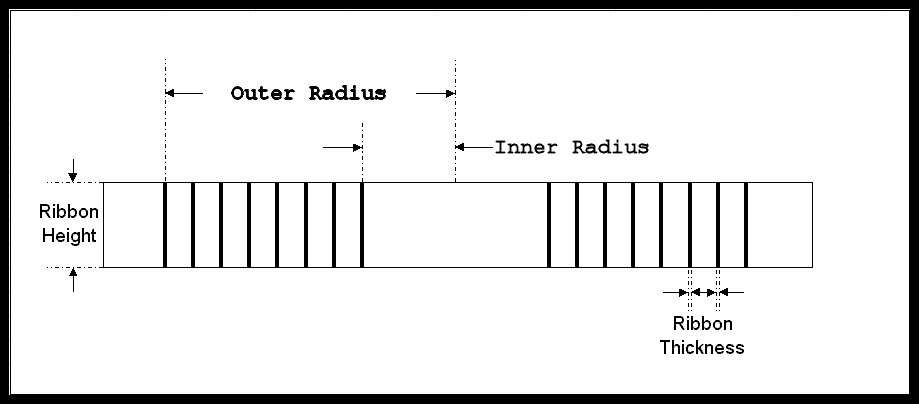
All inputs should reflect center of tubing dimensions. Below are images to help with geometry.
For Round Primary conductors, the Round checkbox must be checked.
Inputs required for round conductors are: radius1, height1, radius2, height2, turns, and wire size (Awg or Diameter)
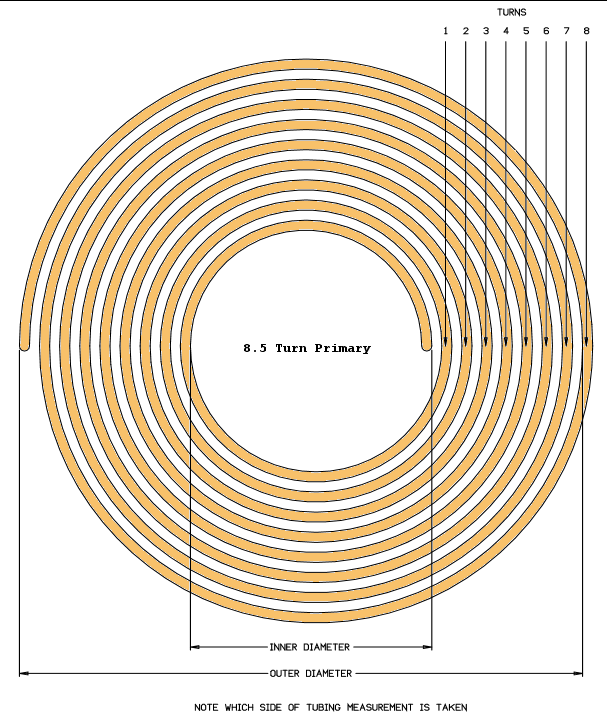
If the coil has not been built and you are unsure of some dimensional values such as turns, click the "Turns" hot-link to evoke a java calculator (opens in separate window). This calculator is very quick and will help to identify turns and angle of winding as you change height, radius, wire, spacing, insulation, etc. Once you have the basic dimensions, enter those values into JAVATC. The calculator is very easy to use and includes Phelps-Dodge wire data for reference.
When Auto-Tune is checked (next to the RUN JAVATC button), the average spacing between turns (edge to edge) is computed. This value remains constant and is used to adjust the primary turns and geometry for the inductance match.
If you use the Auto-Tune function, check the primary input boxes to reference the new dimensions solved by the program.
The following images will help with primary coil geometry.
For all images, r1 = radius1, r2 = radius2, h1 = height1, h2 = height2.
Also, heights and radius values can be inverted in Version 11 and forward. Thus, the LV (low voltage end connected to ground) and the HV (high voltage end) can be configured to your exact configuration.
An example is a flat spiral primary. Some users connect the inside to ground, others connect the outside to ground. Javatc can now do all possibilites. But keep in mind that Height1 and Radius1 will be where you should insert your grounded ends.

